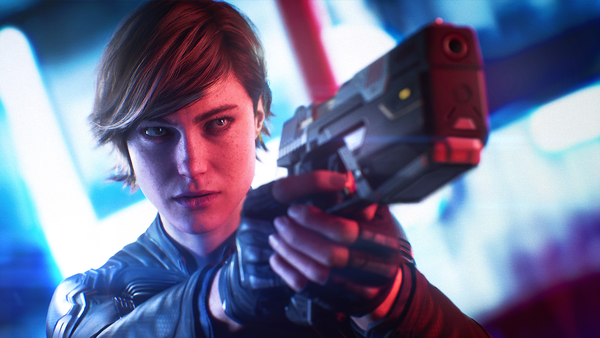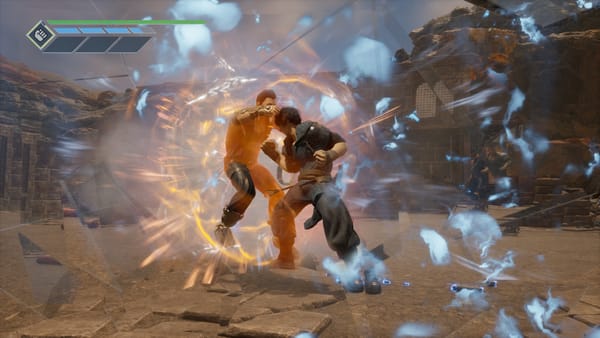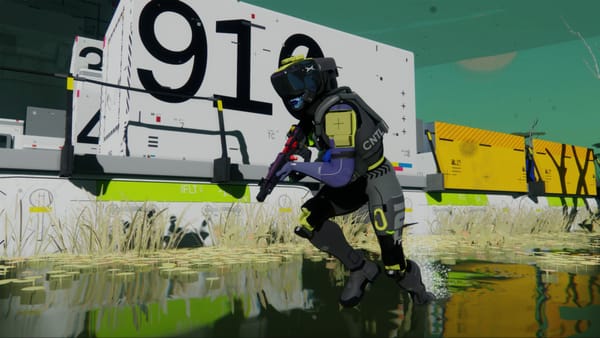#82: End times
It is often said that all games are miracles. How else to describe this magical collision of art and science? Phenomenally talented artists, doing things in days or weeks I could never do in a thousand lifetimes. Brilliantly creative designers and genius animators. Writers weaving a story throughout millions of lines of code strung together by outrageously skilled programmers, and fastidiously hard-working QA teams stress-testing the whole thing to breaking point and beyond. Wonderful stuff. There are good games and bad games and games that sit somewhere in between, but I will never not be amazed that any of them got made.
But there are other groups of people who work on games today. People whose talents lie in markedly less attractive, and less inspirational — but given the state of today’s industry, no less important — ways. The people whose job it is to take the work of those wildly talented writers and artists, designers and programmers and work out a way to make as much money from it as they can — not just at launch, but throughout a game’s life.
Things have always been like this, I suppose. In the industry’s earliest days, games had to be designed in such a way as to maximise their earning potential in arcades. Once consoles came along, the reins were passed to PR and marketing teams, tasked with raising awareness and driving as many sales as possible. Now, with mobile, free-to-play and live-service games having risen to prominence in an industry where competition is more rife than ever, the rules have changed again. Now there are entire teams working on user retention, behavioural psychology, monetisation and all the rest of it. It’s because of them that we have gachas and loot boxes, battle passes and skin stores, XP boosters and all that. I’m sure they’re all nice people once you get to know them but, well, actually maybe they’re not.
In a way, all this NFT and blockchain guff is just the natural consequence of the above, the next grimy step for game monetisation. With competition greater and discovery harder than ever, players increasingly aware of and resistant to the usual f2p and live-service monetisation tactics, and governments around the world looking into how harmful existing methods can be, something else was always going to take its place. And in many ways, NFTs and blockchain are the perfect replacement: negligible risk, enormous returns, guaranteed marketing buzz and, currently at least, a near-total lack of regulation or oversight.
I was, admittedly unconsciously, braced for that to happen. What I didn’t see coming — but probably should have — was that the monetisation and user-psychology ninjas at established game companies, these old hands at the dark arts, would find a way to make the concept of NFTs in games even worse than we already thought they were.
Enter, by way of proof, Ubisoft, which has pressed ahead with the launch of NFTs in Ghost Recon Breakpoint despite the strident pushback that followed the announcement. The first wave was available for purchase to those who’d reached at least level five in the game, which supposedly takes a couple of hours. They take the form of in-game cosmetic armour, each bearing a teeny-tiny serial number by way of provenance.
The only thing to note here, apart from how staggeringly bland and undesirable these things are, is the insistence on a minimal level of engagement with the game before a purchase is available. The kinder way of looking at this is that it helps mitigate against drive-by NFT acquisition by people with no interest in the game, preserving them for active members of the Ghost Recon community. The truth of the matter, I suspect, is that it is designed to juice the game’s engagement numbers, as word spreads among the NFT brognoscenti that you only need to play a couple of hours to be granted entrance to the pyramid. Ubisoft can then proclaim the endeavour a success, hailing the influx of new players it has sparked.
The second ‘drop’ (ugh) arrived over the weekend, and it is here we can truly sense the hands of the Ubisoft dark-arts bods at work. As Axios’ Stephen Totilo notes, the second wave of NFTs are completely free — but only to those who have already played Breakpoint for over 600 hours. Six hundred hours! Sure, unlike the first wave, this is actually, definitely, a form of protectionism that blocks out the drive-by cryptogrifter set, and means that only the most deeply invested players can pick one up. Fair enough, right?
No. Ubisoft surely knows — and hopes — that the overwhelming majority of those players will immediately list those NFTs for sale on the open market. Sure, perhaps they’ll wear them for a while for the flex, but unless they are also established cryptowanker HODLers, these people are not stupid. The playtime requirement is an additional, far higher level of scarcity atop something that is already designed to be scarce, and that pushes up its theoretical value, and therefore its real-world price. It is a publisher-side pump designed to immediately encourage a community-wide dump, from which Ubisoft will take a cut of every sale, and every sale thereafter.
This ain’t game design, chief. This is no miracle. Rather it is a stock market Ubisoft has set up specifically to manipulate, and a casino it has built in which it simply cannot lose; everyone gambles against each other, and the house skims off every trade. Buried in the project’s terms and conditions is an almost total abandonment of liability by Ubisoft. If you get ripped off, tough.
Blockchain proponents will argue that the advantage of this stuff in games is that it enables communities to make money out of something they could previously only spend it on. But the advantages for companies are different, significant, and not particularly pleasant. Blizzard spent millions building the World Of Warcraft Auction House, and likely spends substantially on a daily basis maintaining and policing it. Likewise Valve with the Steam Market. With blockchain, you get to offload all of that. You can delegate it to a thirdparty platform — in Ubisoft’s case, Tezos — which in turn can handwave a lot of those concerns away because, hey man, it’s a trustless system. It’s decentralised! Stop being so Web 2.0, grandpa.
I am now a bit worried. I have maintained all along that there is some potential for this technology in a gaming context. It is clear that the current goldrush is being driven by people coming at games from crypto, and it will only be when the situation is reversed — when people are thinking about blockchain through the lens of game design, rather than a dollar sign — that we will find out whether there is anything of value in it. I now realise my error. I was thinking of game creators as miracle makers, forgetting that not all of them are. Once the predators of monetisation, retention and engagement move in, things don’t get better. They get much, much worse, and I’m afraid this is only the start.
MORE!
- Peter Molyneux has realised that Legacy, the business sim he first announced in 2019, is a perfect fit for blockchain. I imagine that realisation came in the form of a very large cheque. He’s partnered with Gala Games, a company I’ve never heard of which appears to specialise in doing in-game land sales for unreleased games. Jolly good. Honestly, some days I’m not sure it’s even worth chewing through the leather wrist restraints.
- Square Enix has come under fire for ratcheting up the price of its PC games. Forthcoming releases, including Final Fantasy VII Remake which was finally confirmed for PC last week, are stickered up at $69.99. Its price on Epic Games Store has since been hidden, but make no mistake, it’s still happening.
- Activision Blizzard’s chief administrative officer Brian Bulatao sent a company-wide email on Friday warning staff of the perils of seeking to form a union, after union cards were handed out in the wake of the protest against the laying off of Raven Software QA staff.
- Sony has acquired Valkyrie Entertainment, co-developer of Halo Infinite and God Of War: Ragnarok, among numerous others. This is an interesting move by Sony. I was quite struck when Housemarque, accepting a Game Award for Returnal last week, specifically shouted out the support studios that helped get the game over the line. Outsourcing is far more widespread and vital than I think most players realise, particularly in games with big budgets. Shoring up talented, trustworthy support teams makes a lot of sense (and arguably more sense than spray-and-pray studio acquisitions).
- Power On, the six-part Xbox documentary Microsoft has produced as part of the console’s 20th anniversary celebrations, is now up on YouTube, and elsewhere. I watched the first episode over lunch and was impressed by the access and honesty, if not quite the silly animations used in between.
- You may remember People Make Games’ excellent investigation into Roblox, as featured in Hit Points a few months back. Well, here’s a follow-up, based on testimony from Roblox community members who got in touch with the crew after watching the first video, and felt it was only scratching the surface of all the endemic problems in one of the biggest games in the world. This is well worth a watch even if you missed the first one. Some terrible stuff in there.
- Rejoice! The PS5 will finally look a bit less disgusting (or more disgusting, if you buy a neon one) when Sony finally launches coloured console covers in January. In the absence of a proper invisibility cloak for the thing, I’ll take a black one, please and thank you.
That’s your lot! A busy week ahead, with Secret Projects to finish off and a booster/haircut combo to round off the week, after which point Hit Points will close down for Christmas and the New Year (I’ll pause billing cycles, fret not). Have a grand couple of days, and I’ll see you all on Wednesday.





